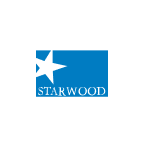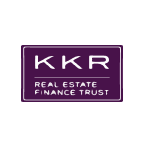ABR

Arbor Realty Trust, Inc.
ABR
(2.5)13,83 USD
2.3% ROA
9.64% ROE
8.89x PER
2.809.380.100,00 USD
347.97% DER
11.54% Yield
19.62% NPM
Arbor Realty Trust, Inc. Stock Analysis
Arbor Realty Trust, Inc. Fundamental Analysis
Fundamental analysis in stock investing is like studying the foundation of a house before buying it. It involves looking at a company's financial health, like its earnings, assets, and debts, to determine if it's a good investment based on its fundamental strength and potential for growth.
| # | Analysis | Rating |
|---|---|---|
| 1 |
PBV
With a remarkably low PBV ratio (0.75x), the stock offers substantial upside potential at a bargain price. |
|
| 2 |
Dividend Growth
With a history of consistent dividend increases over the last five years, the company has proven to be a reliable choice for investors seeking steady income. |
|
| 3 |
Dividend
The company's consistent dividend distribution over the past five years reflects its dedication to providing shareholders with steady returns, making it an appealing choice for investors seeking income stability. |
|
| 4 |
ROE
The stock's ROE falls within an average range (12.18%), demonstrating satisfactory profitability and efficiency in utilizing shareholders' equity. |
|
| 5 |
ROA
The stock's ROA (2.39%) indicates that it's doing well in making money from the things it owns. This makes it a good option to invest and make consistent profits. |
|
| 6 |
Graham Number
The Graham number of this company suggests that its stock price may be undervalued, indicating a potentially attractive investment opportunity. |
|
| 7 |
Buffet Intrinsic Value
The company's stock seems undervalued (22) by Warren Buffett's formula, indicating a promising investment opportunity as its intrinsic value exceeds the market price. |
|
| 8 |
DER
The company has a high debt to equity ratio (303%), which means it owes a lot of money compared to what it actually owns, making it financially risky. |
|
| 9 |
Revenue Growth
Company has experienced no growth in revenue over the past three years, suggesting limited profitability and making it a less desirable investment opportunity. |
|
| 10 |
Net Profit Growth
Over the past five years, this company's net profit has failed to exhibit any growth, indicating a stagnant financial performance and making it a less favorable choice for potential investors. |
|
| 11 |
Assets Growth
Regrettably, this company's revenue has shown no signs of growth over the past three years, suggesting limited potential for returns and making it a less appealing choice. |
Arbor Realty Trust, Inc. Technical Analysis
Technical analysis in stock investing is like reading the patterns on a weather map to predict future weather conditions. It involves studying past stock price movements and trading volumes to make predictions about where a stock's price might go next, without necessarily looking at the company's financial health.
| # | Analysis | Recommendation |
|---|---|---|
| 1 | Awesome Oscillator | Buy |
| 2 | MACD | Sell |
| 3 | RSI | Sell |
| 4 | Stoch RSI | Buy |
Arbor Realty Trust, Inc. Price Chart
Financial Statements
Financial statements are like report cards for companies. They show how much money a company makes (income statement), what it owns and owes (balance sheet), and where it spends its money (cash flow statement), helping stock investors understand if a company is healthy and worth investing in.
Income Statements
An income statement for a company is like a scoreboard for its profits and losses. It shows how much money the company made (revenue) and how much it spent to make that money (expenses), helping stock investors see if a company is making a profit or not.
Revenue in stock investing is the total amount of money a company earns from its sales, and it's a key factor that investors consider to assess a company's financial performance and growth potential.
| Year | Revenue | Growth |
|---|---|---|
| 2003 | 8.499.220 | |
| 2004 | 39.121.920 | 78.28% |
| 2005 | 84.315.423 | 53.6% |
| 2006 | 85.791.431 | 1.72% |
| 2007 | 160.887.260 | 46.68% |
| 2008 | 98.711.190 | -62.99% |
| 2009 | 94.874.519 | -4.04% |
| 2010 | 36.142.472 | -162.5% |
| 2011 | 46.572.478 | 22.4% |
| 2012 | 47.639.577 | 2.24% |
| 2013 | 85.096.794 | 44.02% |
| 2014 | 93.408.111 | 8.9% |
| 2015 | 88.402.000 | -5.66% |
| 2016 | 171.434.000 | 48.43% |
| 2017 | 272.880.000 | 37.18% |
| 2018 | 347.786.000 | 21.54% |
| 2019 | 371.811.000 | 6.46% |
| 2020 | 439.377.000 | 15.38% |
| 2021 | 661.478.000 | 33.58% |
| 2022 | 1.176.678.000 | 43.78% |
| 2023 | 141.852.000 | -729.51% |
| 2023 | 1.624.240.000 | 91.27% |
| 2024 | 1.450.420.000 | -11.98% |
Research and Development Expenses are the costs a company incurs to create and improve its products or services, which can be important for investors to evaluate a company's innovation and potential for future growth.
| Year | Research and Development Expenses | Growth |
|---|---|---|
| 2003 | 0 | |
| 2004 | 0 | 0% |
| 2005 | 0 | 0% |
| 2006 | 0 | 0% |
| 2007 | 0 | 0% |
| 2008 | 0 | 0% |
| 2009 | 0 | 0% |
| 2010 | 0 | 0% |
| 2011 | 0 | 0% |
| 2012 | 0 | 0% |
| 2013 | 0 | 0% |
| 2014 | 0 | 0% |
| 2015 | 0 | 0% |
| 2016 | 0 | 0% |
| 2017 | 0 | 0% |
| 2018 | 0 | 0% |
| 2019 | 0 | 0% |
| 2020 | 0 | 0% |
| 2021 | 0 | 0% |
| 2022 | 0 | 0% |
| 2023 | 0 | 0% |
| 2023 | 0 | 0% |
| 2024 | 0 | 0% |
General and Administrative Expenses are the costs a company incurs to run its day-to-day operations, such as office rent, salaries, and utilities, which investors consider to understand a company's overall efficiency and management effectiveness.
| Year | General and Administrative Expenses | Growth |
|---|---|---|
| 2003 | 2.661.703 | |
| 2004 | 4.234.249 | 37.14% |
| 2005 | 4.274.609 | 0.94% |
| 2006 | 9.111.663 | 53.09% |
| 2007 | 9.381.055 | 2.87% |
| 2008 | 19.847.225 | 52.73% |
| 2009 | 35.795.459 | 44.55% |
| 2010 | 34.424.812 | -3.98% |
| 2011 | 19.495.663 | -76.58% |
| 2012 | 20.173.572 | 3.36% |
| 2013 | 22.942.332 | 12.07% |
| 2014 | 42.926.172 | 46.55% |
| 2015 | 28.400.000 | -51.15% |
| 2016 | 51.247.000 | 44.58% |
| 2017 | 98.799.000 | 48.13% |
| 2018 | 110.470.000 | 10.56% |
| 2019 | 122.102.000 | 9.53% |
| 2020 | 144.380.000 | 15.43% |
| 2021 | 171.796.000 | 15.96% |
| 2022 | 161.825.000 | -6.16% |
| 2023 | 159.240.000 | -1.62% |
| 2023 | 159.788.000 | 0.34% |
| 2024 | 171.344.000 | 6.74% |
EBITDA stands for Earnings Before Interest, Taxes, Depreciation, and Amortization. It is a measure that helps stock investors analyze a company's profitability by looking at its earnings without considering certain expenses. This helps to get a clearer picture of the company's financial performance and its ability to generate cash flow.
| Year | EBITDA | Growth |
|---|---|---|
| 2003 | 5.077.650 | |
| 2004 | 43.014.111 | 88.2% |
| 2005 | 95.966.541 | 55.18% |
| 2006 | 142.887.406 | 32.84% |
| 2007 | 250.716.553 | 43.01% |
| 2008 | 3.151.217.859 | 92.04% |
| 2009 | 917.001.703 | -243.64% |
| 2010 | 2.565.299.154 | 64.25% |
| 2011 | 24.174.321.525 | 89.39% |
| 2012 | -8.270.219 | 292405.7% |
| 2013 | 32.073.642 | 125.79% |
| 2014 | 39.444.026 | 18.69% |
| 2015 | 32.808.000 | -20.23% |
| 2016 | 115.826.000 | 71.67% |
| 2017 | 187.448.000 | 38.21% |
| 2018 | 245.388.000 | 23.61% |
| 2019 | 255.351.000 | 3.9% |
| 2020 | 309.613.000 | 17.53% |
| 2021 | 509.219.000 | 39.2% |
| 2022 | 449.233.000 | -13.35% |
| 2023 | 1.214.144.000 | 63% |
| 2023 | 414.926.000 | -192.62% |
| 2024 | 1.220.348.000 | 66% |
Gross profit is the money a company makes from selling its products or services after subtracting the cost of producing or providing them, and it is an important measure for investors to understand a company's profitability.
| Year | Gross Profit | Growth |
|---|---|---|
| 2003 | 8.499.220 | |
| 2004 | -2.286.605.080 | 100.37% |
| 2005 | -4.190.293.577 | 45.43% |
| 2006 | -4.562.852.569 | 8.17% |
| 2007 | -9.220.167.740 | 50.51% |
| 2008 | -8.011.291.810 | -15.09% |
| 2009 | -10.059.401.481 | 20.36% |
| 2010 | -8.023.221.528 | -25.38% |
| 2011 | -11.149.090.522 | 28.04% |
| 2012 | 11.793.277 | 94637.68% |
| 2013 | 47.765.373 | 75.31% |
| 2014 | 55.950.512 | 14.63% |
| 2015 | 55.772.000 | -0.32% |
| 2016 | 140.346.000 | 60.26% |
| 2017 | 231.660.000 | 39.42% |
| 2018 | 300.281.000 | 22.85% |
| 2019 | 321.262.000 | 6.53% |
| 2020 | 397.131.000 | 19.1% |
| 2021 | 615.185.000 | 35.45% |
| 2022 | 619.061.000 | 0.63% |
| 2023 | -17.388.000 | 3660.28% |
| 2023 | 721.012.000 | 102.41% |
| 2024 | 1.434.392.004 | 49.73% |
Net income in stock investing is like the money a company actually gets to keep as profit after paying all its bills, and it's an important measure to understand how well a company is doing financially.
| Year | Net Profit | Growth |
|---|---|---|
| 2003 | 3.407.919 | |
| 2004 | 25.072.682 | 86.41% |
| 2005 | 50.387.023 | 50.24% |
| 2006 | 50.413.807 | 0.05% |
| 2007 | 84.533.878 | 40.36% |
| 2008 | -81.229.844 | 204.07% |
| 2009 | -230.631.156 | 64.78% |
| 2010 | 112.910.211 | 304.26% |
| 2011 | -40.311.713 | 380.09% |
| 2012 | 16.172.850 | 349.26% |
| 2013 | 21.174.538 | 23.62% |
| 2014 | 93.048.490 | 77.24% |
| 2015 | 53.429.000 | -74.15% |
| 2016 | 50.350.000 | -6.12% |
| 2017 | 73.389.000 | 31.39% |
| 2018 | 115.866.000 | 36.66% |
| 2019 | 128.627.999 | 9.92% |
| 2020 | 170.949.000 | 24.76% |
| 2021 | 339.300.000 | 49.62% |
| 2022 | 325.783.000 | -4.15% |
| 2023 | 353.064.000 | 7.73% |
| 2023 | 371.434.000 | 4.95% |
| 2024 | 230.956.000 | -60.82% |
EPS, or earnings per share, is a measure that shows how much profit a company has earned for each outstanding share of its stock, and it is important for stock investors as it helps understand the profitability of a company and compare it with other companies in the market.
| Year | Earning per Share (EPS) | Growth |
|---|---|---|
| 2003 | 0 | |
| 2004 | 2 | 100% |
| 2005 | 3 | 50% |
| 2006 | 3 | 0% |
| 2007 | 4 | 50% |
| 2008 | -4 | 233.33% |
| 2009 | -9 | 66.67% |
| 2010 | 4 | 325% |
| 2011 | -2 | 500% |
| 2012 | 1 | 0% |
| 2013 | 0 | 0% |
| 2014 | 2 | 100% |
| 2015 | 1 | 0% |
| 2016 | 1 | 0% |
| 2017 | 1 | 100% |
| 2018 | 2 | 0% |
| 2019 | 1 | 0% |
| 2020 | 1 | 0% |
| 2021 | 2 | 50% |
| 2022 | 2 | -100% |
| 2023 | 2 | 0% |
| 2023 | 2 | 50% |
| 2024 | 1 | -100% |
Cashflow Statements
Cashflow statements show the movement of money in and out of a company, helping stock investors understand how much money a company makes and spends. By examining cashflow statements, investors can assess if a company is generating enough cash to pay its bills, invest in growth, and provide returns to stockholders.
Free cash flow is the leftover cash that a company generates after covering its operating expenses and capital expenditures, which is important for stock investors as it shows how much money a company has available to invest in growth, pay dividends, or reduce debt.
| Year | Free Cashflow | Growth |
|---|---|---|
| 2003 | 10.837.629 | |
| 2004 | 28.073.662 | 61.4% |
| 2005 | 73.235.970 | 61.67% |
| 2006 | 65.094.371 | -12.51% |
| 2007 | 159.688.381 | 59.24% |
| 2008 | 50.403.079 | -216.82% |
| 2009 | 217.155.154 | 76.79% |
| 2010 | 210.031.731 | -3.39% |
| 2011 | -22.111.066.220 | 100.95% |
| 2012 | 42.403.357 | 52244.61% |
| 2013 | 14.518.205 | -192.07% |
| 2014 | 47.993.247 | 69.75% |
| 2015 | 74.200.940 | 35.32% |
| 2016 | -149.175.385 | 149.74% |
| 2017 | 459.635.000 | 132.46% |
| 2018 | -38.102.000 | 1306.33% |
| 2019 | -226.537.000 | 83.18% |
| 2020 | 55.165.000 | 510.65% |
| 2021 | 216.847.000 | 74.56% |
| 2022 | 1.099.649.000 | 80.28% |
| 2023 | 56.877.000 | -1833.38% |
| 2023 | 235.857.000 | 75.88% |
| 2024 | 81.087.000 | -190.87% |
Operating cash flow represents the cash generated or consumed by a company's day-to-day operations, excluding external investing or financing activities, and is crucial for stock investors as it shows how much cash a company is generating from its core business operations.
| Year | Operating Cashflow | Growth |
|---|---|---|
| 2003 | 10.837.629 | |
| 2004 | 28.073.662 | 61.4% |
| 2005 | 73.235.970 | 61.67% |
| 2006 | 65.094.371 | -12.51% |
| 2007 | 159.688.381 | 59.24% |
| 2008 | 50.403.079 | -216.82% |
| 2009 | 49.415.285 | -2% |
| 2010 | 20.903.501 | -136.4% |
| 2011 | -389.622 | 5465.07% |
| 2012 | 20.166.051 | 101.93% |
| 2013 | 22.522.344 | 10.46% |
| 2014 | 30.795.356 | 26.86% |
| 2015 | 36.347.689 | 15.28% |
| 2016 | -197.617.076 | 118.39% |
| 2017 | 460.834.000 | 142.88% |
| 2018 | -37.735.000 | 1321.24% |
| 2019 | -226.537.000 | 83.34% |
| 2020 | 55.165.000 | 510.65% |
| 2021 | 216.847.000 | 74.56% |
| 2022 | 1.099.649.000 | 80.28% |
| 2023 | 56.877.000 | -1833.38% |
| 2023 | 235.857.000 | 75.88% |
| 2024 | 81.087.000 | -190.87% |
Capex, short for capital expenditures, refers to the money a company spends on acquiring or upgrading tangible assets like buildings, equipment, or technology, which is important for stock investors as it indicates how much a company is investing in its infrastructure to support future growth and profitability.
| Year | Capital Expenditure | Growth |
|---|---|---|
| 2003 | 0 | |
| 2004 | 0 | 0% |
| 2005 | 0 | 0% |
| 2006 | 0 | 0% |
| 2007 | 0 | 0% |
| 2008 | 0 | 0% |
| 2009 | -167.739.869 | 100% |
| 2010 | -189.128.230 | 11.31% |
| 2011 | 22.110.676.598 | 100.86% |
| 2012 | -22.237.306 | 99530.55% |
| 2013 | 8.004.139 | 377.82% |
| 2014 | -17.197.891 | 146.54% |
| 2015 | -37.853.251 | 54.57% |
| 2016 | -48.441.691 | 21.86% |
| 2017 | 1.199.000 | 4140.17% |
| 2018 | 367.000 | -226.7% |
| 2019 | 0 | 0% |
| 2020 | 0 | 0% |
| 2021 | 0 | 0% |
| 2022 | 0 | 0% |
| 2023 | 0 | 0% |
| 2023 | 0 | 0% |
| 2024 | 0 | 0% |
Balance Sheet
Balance sheets provide a snapshot of a company's financial health and its assets (such as cash, inventory, and property) and liabilities (like debts and obligations) at a specific point in time. For stock investors, balance sheets help assess the company's overall worth and evaluate its ability to meet financial obligations and support future growth.
Equity refers to the ownership interest or stake that shareholders have in a company, representing their claim on its assets and earnings after all debts and liabilities are paid.
| Year | Equity | Growth |
|---|---|---|
| 2003 | 154.747.716 | |
| 2004 | 323.002.904 | 52.09% |
| 2005 | 351.300.073 | 8.05% |
| 2006 | 361.579.329 | 2.84% |
| 2007 | 468.117.343 | 22.76% |
| 2008 | 280.994.668 | -66.59% |
| 2009 | 98.633.970 | -184.89% |
| 2010 | 206.415.243 | 52.22% |
| 2011 | 173.060.533 | -19.27% |
| 2012 | 231.261.122 | 25.17% |
| 2013 | 437.596.282 | 47.15% |
| 2014 | 535.455.471 | 18.28% |
| 2015 | 565.090.775 | 5.24% |
| 2016 | 747.037.928 | 24.36% |
| 2017 | 864.556.000 | 13.59% |
| 2018 | 1.065.566.000 | 18.86% |
| 2019 | 1.356.027.000 | 21.42% |
| 2020 | 1.482.685.000 | 8.54% |
| 2021 | 2.549.984.000 | 41.86% |
| 2022 | 3.071.879.000 | 16.99% |
| 2023 | 3.254.605.000 | 5.61% |
| 2023 | 3.240.501.000 | -0.44% |
| 2024 | 3.186.639.000 | -1.69% |
Assets represent the valuable resources that a company owns, such as cash, inventory, property, and equipment, and understanding a company's assets helps investors assess its value and potential for generating future profits.
| Year | Assets | Growth |
|---|---|---|
| 2003 | 338.164.432 | |
| 2004 | 912.295.177 | 62.93% |
| 2005 | 1.396.075.357 | 34.65% |
| 2006 | 2.204.345.211 | 36.67% |
| 2007 | 2.901.493.534 | 24.03% |
| 2008 | 2.579.236.489 | -12.49% |
| 2009 | 2.060.774.772 | -25.16% |
| 2010 | 1.731.207.928 | -19.04% |
| 2011 | 1.776.714.330 | 2.56% |
| 2012 | 1.701.881.280 | -4.4% |
| 2013 | 1.877.472.482 | 9.35% |
| 2014 | 1.880.422.590 | 0.16% |
| 2015 | 1.827.391.944 | -2.9% |
| 2016 | 2.970.786.246 | 38.49% |
| 2017 | 3.625.945.000 | 18.07% |
| 2018 | 4.612.175.000 | 21.38% |
| 2019 | 6.239.160.000 | 26.08% |
| 2020 | 7.660.986.000 | 18.56% |
| 2021 | 15.073.845.000 | 49.18% |
| 2022 | 17.038.985.000 | 11.53% |
| 2023 | 15.738.636.000 | -8.26% |
| 2023 | 15.902.689.000 | 1.03% |
| 2024 | 14.197.212.000 | -12.01% |
Liabilities refer to the financial obligations or debts that a company owes to creditors or external parties, and understanding a company's liabilities is important for investors as it helps assess the company's financial risk and ability to meet its obligations.
| Year | Liabilities | Growth |
|---|---|---|
| 2003 | 183.416.716 | |
| 2004 | 589.292.273 | 68.88% |
| 2005 | 1.044.775.284 | 43.6% |
| 2006 | 1.842.765.882 | 43.3% |
| 2007 | 2.433.376.191 | 24.27% |
| 2008 | 2.298.241.821 | -5.88% |
| 2009 | 1.962.140.802 | -17.13% |
| 2010 | 1.524.792.685 | -28.68% |
| 2011 | 1.603.653.797 | 4.92% |
| 2012 | 1.470.620.158 | -9.05% |
| 2013 | 1.439.876.200 | -2.14% |
| 2014 | 1.344.967.119 | -7.06% |
| 2015 | 1.262.301.169 | -6.55% |
| 2016 | 2.223.748.318 | 43.24% |
| 2017 | 2.761.389.000 | 19.47% |
| 2018 | 3.546.609.000 | 22.14% |
| 2019 | 4.883.133.000 | 27.37% |
| 2020 | 6.178.301.000 | 20.96% |
| 2021 | 12.523.861.000 | 50.67% |
| 2022 | 13.967.106.000 | 10.33% |
| 2023 | 12.484.031.000 | -11.88% |
| 2023 | 12.662.188.000 | 1.41% |
| 2024 | 11.010.573.000 | -15% |
Arbor Realty Trust, Inc. Financial Ratio (TTM)
Valuation Metrics
- Revenue per Share
- 5.14
- Net Income per Share
- 1.68
- Price to Earning Ratio
- 8.89x
- Price To Sales Ratio
- 2.89x
- POCF Ratio
- 5.91
- PFCF Ratio
- 5.91
- Price to Book Ratio
- 0.92
- EV to Sales
- 12.86
- EV Over EBITDA
- 10.09
- EV to Operating CashFlow
- 26.26
- EV to FreeCashFlow
- 26.26
- Earnings Yield
- 0.11
- FreeCashFlow Yield
- 0.17
- Market Cap
- 2,81 Bil.
- Enterprise Value
- 12,48 Bil.
- Graham Number
- 24.71
- Graham NetNet
- -52.87
Income Statement Metrics
- Net Income per Share
- 1.68
- Income Quality
- 1.44
- ROE
- 0.1
- Return On Assets
- 0.02
- Return On Capital Employed
- 0.03
- Net Income per EBT
- 0.87
- EBT Per Ebit
- 1
- Ebit per Revenue
- 0.22
- Effective Tax Rate
- 0.06
Margins
- Sales, General, & Administrative to Revenue
- 0.17
- Research & Developement to Revenue
- 0
- Stock Based Compensation to Revenue
- 0.02
- Gross Profit Margin
- 0.44
- Operating Profit Margin
- 0.22
- Pretax Profit Margin
- 0.22
- Net Profit Margin
- 0.2
Dividends
- Dividend Yield
- 0.12
- Dividend Yield %
- 11.54
- Payout Ratio
- 1.25
- Dividend Per Share
- 1.72
Operating Metrics
- Operating Cashflow per Share
- 2.52
- Free CashFlow per Share
- 2.52
- Capex to Operating CashFlow
- 0
- Capex to Revenue
- 0
- Capex to Depreciation
- 0
- Return on Invested Capital
- 0.04
- Return on Tangible Assets
- 0.02
- Days Sales Outstanding
- 39.52
- Days Payables Outstanding
- 0
- Days of Inventory on Hand
- -7.94
- Receivables Turnover
- 9.23
- Payables Turnover
- 0
- Inventory Turnover
- -45.98
- Capex per Share
- 0
Balance Sheet
- Cash per Share
- 5,08
- Book Value per Share
- 16,89
- Tangible Book Value per Share
- 14.4
- Shareholders Equity per Share
- 16.19
- Interest Debt per Share
- 61.03
- Debt to Equity
- 3.48
- Debt to Assets
- 0.75
- Net Debt to EBITDA
- 7.82
- Current Ratio
- 4.32
- Tangible Asset Value
- 2,72 Bil.
- Net Current Asset Value
- 2,01 Bil.
- Invested Capital
- 10481083000
- Working Capital
- 10,01 Bil.
- Intangibles to Total Assets
- 0.03
- Average Receivables
- 0,10 Bil.
- Average Payables
- 0,00 Bil.
- Average Inventory
- -916999
- Debt to Market Cap
- 3.78
Dividends
Dividends in stock investing are like rewards that companies give to their shareholders. They are a portion of the company's profits distributed to investors, typically in the form of cash payments, as a way for them to share in the company's success.
| Year | Dividends | Growth |
|---|---|---|
| 2004 | 8 | |
| 2005 | 22 | 68.18% |
| 2006 | 26 | 12% |
| 2007 | 25 | -4.17% |
| 2008 | 21 | -20% |
| 2012 | 2 | -1900% |
| 2013 | 1 | 0% |
| 2014 | 1 | 0% |
| 2015 | 1 | 0% |
| 2016 | 1 | 0% |
| 2017 | 1 | 0% |
| 2018 | 1 | 100% |
| 2019 | 1 | 0% |
| 2020 | 1 | 0% |
| 2021 | 1 | 0% |
| 2022 | 2 | 0% |
| 2023 | 2 | 0% |
| 2024 | 1 | 0% |
Arbor Realty Trust, Inc. Profile
About Arbor Realty Trust, Inc.
Arbor Realty Trust, Inc. invests in a diversified portfolio of structured finance assets in the multifamily, single-family rental, and commercial real estate markets in the United States. The company operates in two segments, Structured Business and Agency Business. It primarily invests in bridge and mezzanine loans, including junior participating interests in first mortgages, and preferred and direct equity, as well as real estate-related joint ventures, real estate-related notes, and various mortgage-related securities. The company offers bridge financing products to borrowers who seek short-term capital to be used in an acquisition of property; financing by making preferred equity investments in entities that directly or indirectly own real property; mezzanine financing in the form of loans that are subordinate to a conventional first mortgage loan and senior to the borrower's equity in a transaction; junior participation financing in the form of a junior participating interest in the senior debt; and financing products to borrowers who are looking to acquire conventional, workforce, and affordable single-family housing. Further, it underwrites, originates, sells, and services multifamily mortgage loans through conduit/commercial mortgage-backed securities programs. The company qualifies as a real estate investment trust for federal income tax purposes. It generally would not be subject to federal corporate income taxes if it distributes at least 90% of its taxable income to its stockholders. Arbor Realty Trust, Inc. was incorporated in 2003 and is headquartered in Uniondale, New York.
- CEO
- Mr. Ivan Paul Kaufman
- Employee
- 647
- Address
-
333 Earle Ovington Boulevard
Uniondale, 11553
Arbor Realty Trust, Inc. Executives & BODs
| # | Name | Age |
|---|---|---|
| 1 |
Mr. Lee Roth Senior Vice President |
70 |
| 2 |
Mr. John G. Caulfield Executive Vice President & Chief Operating Officer of Agency Lending |
70 |
| 3 |
Mr. Dennis van der Reis Executive Vice President of Servicing & Asset Management |
70 |
| 4 |
Mr. Thomas J. Ridings Jr., CPA MD & Chief Accounting Officer |
70 |
| 5 |
Mr. Paul Anthony Elenio Executive Vice President & Chief Financial Officer |
70 |
| 6 |
Mr. Ivan Paul Kaufman Chairman, President & Chief Executive Officer |
70 |
| 7 |
Mr. Steven Katz Chief Investment Officer & Executive Vice President of Residential Financing |
70 |
| 8 |
Mr. Howard Leiner Executive Vice President & Chief Technology Officer |
70 |
| 9 |
Mr. Sean Coon Senior Vice President of Operations |
70 |
| 10 |
Ms. Maysa Vahidi B.A., J.D. Executive Vice President & General Counsel |
70 |












